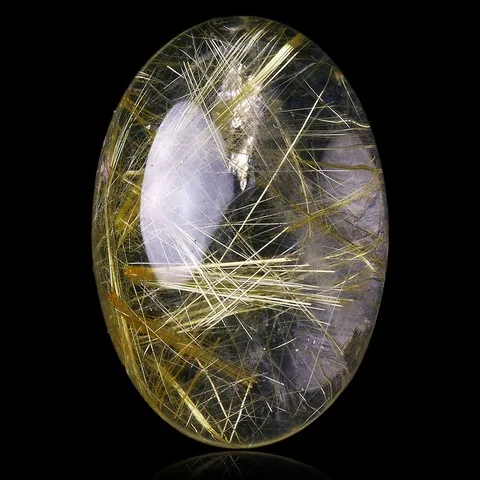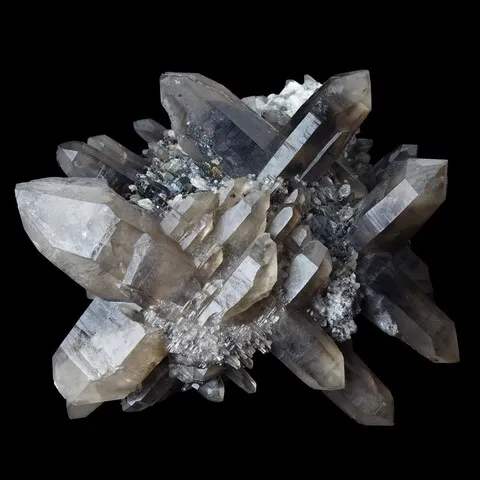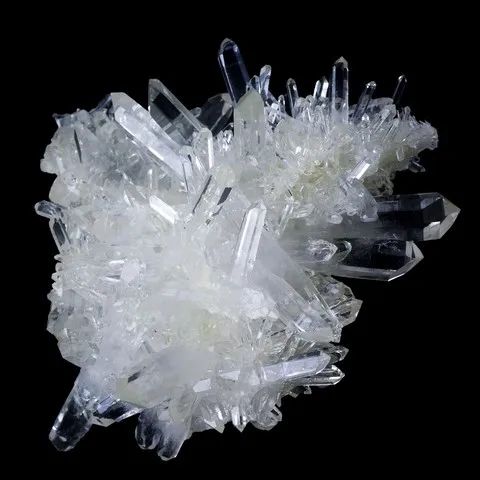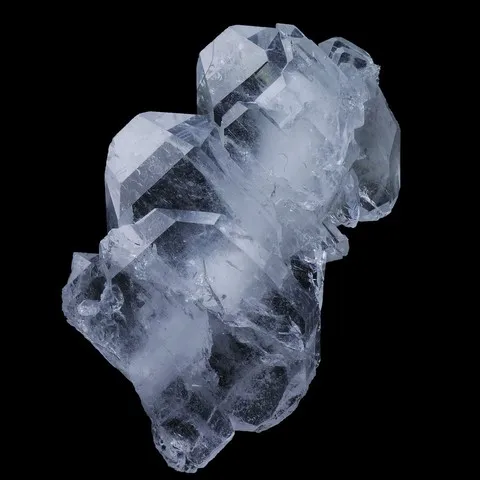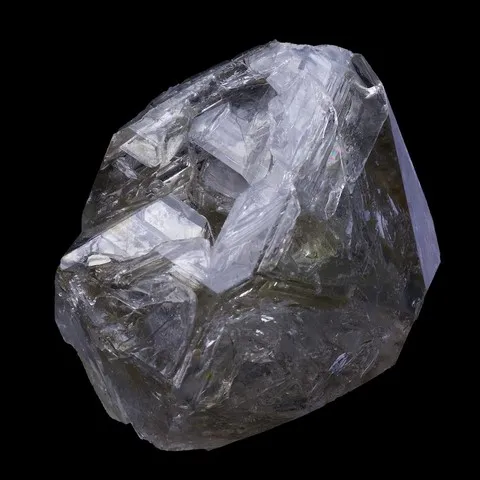QUARTZ

Class : Silicates
Subclass : Tectosilicates
Crystal system : Trigonal
Chemistry : SiO2
Rarity : Very common
Quartz is the most common mineral expression of silica, it is also the most abundant mineral of the continental crust. It is found everywhere, in a wide variety of geological contexts : sedimentary, metamorphic and magmatic (except ultra-basic rocks). The most developed crystals come from pegmatites and hydrothermal veins. Almost unalterable, it can, after erosion, constitute sedimentary rocks, such as sandstones or quartzites. It is a translucent to transparent mineral. Its colors can be very different : hyaline (colorless and transparent), amethyst (purple), citrine (yellow/orange), ametrine (yellow/purple), smoky (brown to black), hematoid (red due to inclusions of hematite), pink (fibrous inclusions of dumortierite). It can also have many other inclusions : rutile (rutilated quartz or Venus hair), aventurine (chrome micas), tiger's eye (altered shiny crocidolite fibers) or enhydro (inclusions of hydrothermal fluids with movable CO2 bubbles). Quartz has a large number of crystalline forms, conventionally it's an hexagonal prism with a 6-sided pyramid termination. The microcrystalline form is called chalcedony. It is an important industrial mineral with a wide range of applications. The bulk of the production (about 80%) is destined for the glass and foundry industry, in this case, they used sands. These sands also enter into the making processes of some concretes. Crushed, it is used in the porcelain manufacture, some paints, or synthetic abrasive (silicon carbide or carborundum). It is also widely used in electronics, watchmaking, computers because of its piezoelectric property and in optics to produce monochromatic light. Because of this specificities, the industry needs the purest quartz possible, without twinning. Since 1947 the quartz is thus synthesized for these specific uses. It is also widely used as an ornamental stone and in jewelry as a gemstone since a very long time, so it is also found on some pieces of jewelry of the 2nd century.

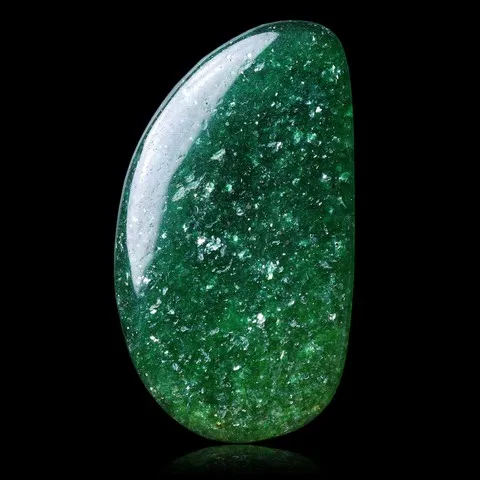
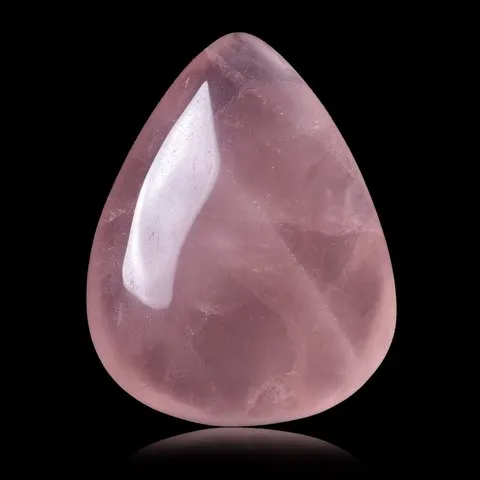
Quartz in the World
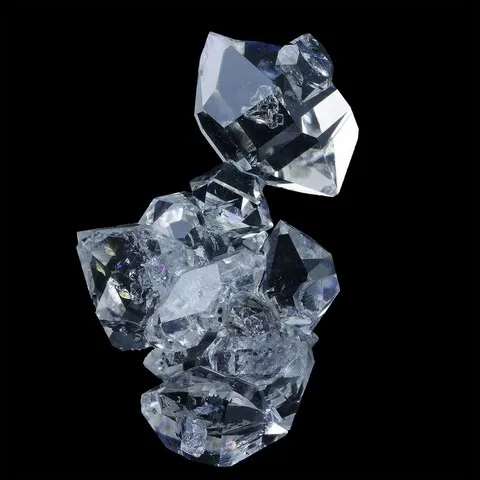
Quartz in France
The most aesthetic quartz comes from hydrothermal veins, one of the best known examples of which is the old gold mine at La Gardette in Isère (France), which has provided crystals that are totally transparent in decimetric brilliant prisms, sometimes covering plates of more than a meter (photo on the left). The alpine veins also produced transparent crystals, but the most famous ones remain the smoky quartz sometimes exceeding 30 cm and very abundant in the large pocket of the Mont-Blanc Massif. Because quartz is present everywhere on the surface of the Earth, it is also very present on the French territory, we can note, the deposits of kaolins of Echassières in Allier department or Ploemeur in Morbihan ; but also Firminy in Loire, pegmatites of Vénachat in Haute-Vienne or Coustouges in Pyrénées-Orientales, etc ...
Twinning
The crystals of quartz are generally all twinned, and there are more than 20 different twins for this species. However, quartz twins are very difficult to detect. The most obvious twin is the "La Gardette" or "Japan-law" twinned crystals. The Japan-law twinned quartz are formed of two single crystals whose axis makes an angle of 84.33 °. The much more frequent twin is the Brazil-law twinned quartz, it can be easily detected with a polariscope or in ametrine crystals by simple observations of triangular yellow and purple zonations. (On the right side a Japan-law twinned quartz from Vizille, Isère, France).
The different crystal forms of quartz
Special shapes
There are a very large number of redundant special forms for quartz :
- Scepter : a particular association of two crystals, a short large crystal encapsulating the end of a finer elongated one. This gives the whole an aspect of scepter. It is probably an epitaxy.
- Antiscepter : particular association of two crystals, a slender crystal encapsulating the end of another larger crystal.
- Faden : stack of doubly-terminated crystals presenting a straight milky opaque cloud of tiny fluid inclusions.
- Windowed : habitus linked to a rapid growth of the edges and lacunar facial surfaces leading to triangular voids inside the crystal.
- Pineapple : single crystal with triangular outgrowths.
- Babel-quartz : variety resembling the morphology in floor of the Babel tower. This form is due to a lacunar growth linked to other minerals later dissolved (photo on the left).
- Gwindel : single-crystal flat slightly twisted and generally with a smoky color without milky opaque cloud.
- Sugar : undeveloped gwindel with pseudo-parallelepiped shape.
Inks and surface treatments
Among the classic scams we note the natural quartz geodes painted. The inks used generally do not hold, a passage in water or in acetone is enough to reveal the deception... These items are generally sold at low prices.
More vicious and produced in China, groups of colorless natural quartz are commonly covered with a thin colored layer by metallization process (treatment process making it possible to obtain blue crystals called "aqua aura"). The crystals are placed under vacuum, and an electric current of high intensity and low voltage is sent through a metallic filament which heats up and sublimates the metal which composes it. The metal in the form of vapor will then be deposited on the surface of the crystals and can then be removed only by mechanical means. The metallization color obtained depends on the nature of the filament used (titanium or gold for aqua aura blue quartz). It is also possible to color quartz by chemical precipitation.
Synthetic quartz

More subtle and rarer on the market, synthetic quartz. Quartz crystals are conventionally synthesized in apparatuses called "autoclaves", a kind of pressure cooker that allows a chemical solution to rise in pressure and temperature. These "hydrothermal" quartz as we call them have a tabular facies, they do not resemble the natural quartz (photo on the right side). They are not twinned to present optimal piezoelectric characteristics for electronics, the main consumer sector of synthetic quartz. Some of them have been cut in gemstones for jewelry, but it's not a good deal for producers becauses synthetic quartz are more expensive than natural counterparts... The main problem is that a small quantity of natural pyramidal facies amethyst and citrine specimens has been successfully produced in China at low cost by this method and marketed. These amethysts or citrine are floaters whose matrix is a piece of granite, the crystals present color zoning and the purple or yellow color is punctuated of orange areas. The picture below shows synthetic specimens sold on eBay for natural...

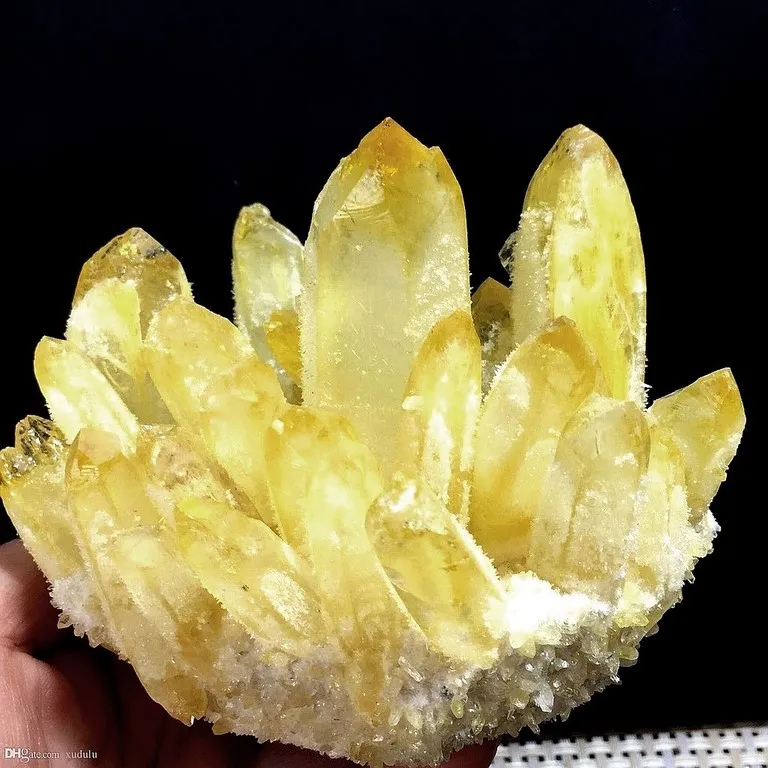
Other treatments
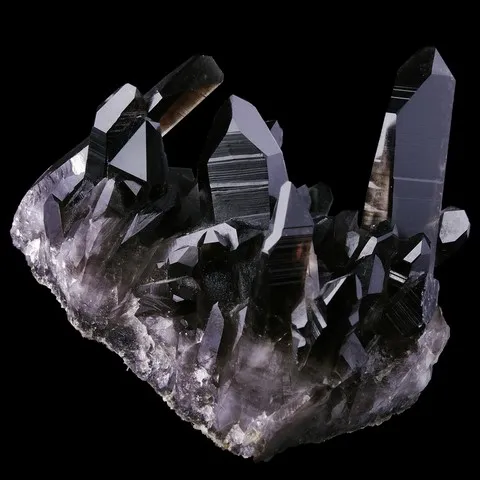
Many Eastern European (Cavnic), Arkansas (USA) and Chinese smoky quartz are widely treated by irradiation to give them a smoky to black color (photo on the right). Radiation amorphizes (destroys) the crystal lattice of quartz, preventing light from passing through. Unfortunately, these treatments are rarely specified.
Some Brazilian quartz (and potentially from everywhere) can have repolished faces or have been totally carved, the slight bulging of the repolished faces and the absence of growth / dissolution figures make it easy to make the difference.
Finally, on the gemstones market (gems, ornamental objects, etc ...) the quartz can be easily replaced by glass, the use of a polariscope makes it possible to quickly make a good identification.
Hardness : 7
Density : 2,65
Fracture : Conchoidale
Streak : White
TP : Transparent to opaque
RI : 1,544 to 1,553
Birefringence : 0,009
Optical character : Uniaxial +
Pleochroism : Weak
Fluorescence : Very rare
Solubility : Hydrofluoric acid
Magnetism : None
Radioactivity : None

